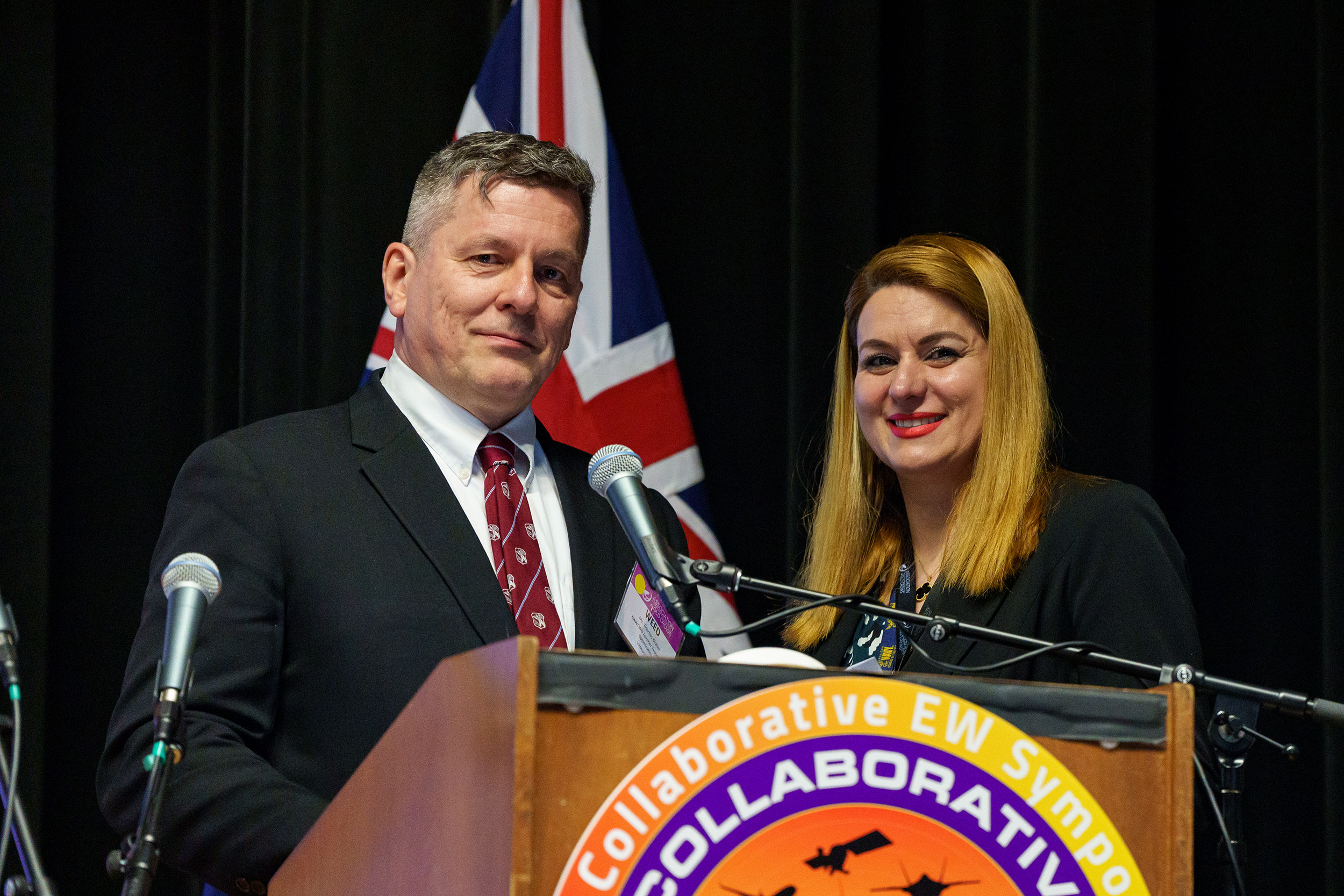NAWCWD, AOC host 50th Collaborative EW Symposium at Point Mugu
More than 550 industry and government leaders in electronic warfare gathered for the 50th Collaborative Electronic Warfare Symposium at Naval Base Ventura County, Point Mugu, California, March 14-16.
The in-person event is usually held annually, but it was put on hold during the COVID-19 pandemic.
The symposium, jointly hosted by Naval Air Warfare Center Weapons Division and the Association of Old Crows under a co-sponsorship agreement, focused on collaboration and innovation in the world of electronic warfare and brings together government and industry partners from across the country. This year’s symposium was also open to our Australian allies.
Collaboration with allies and partners supports the National Defense Strategy’s integrated deterrence concept, which weaves together cutting-edge capabilities, operational concepts and the comparative advantage of our interagency and our Allies and partners to dissuade and deter aggression in any domain. Electronic warfare and spectrum dominance efforts areas where we must be collaborative to come out on top.
“The electromagnetic spectrum is a highly contested, congested arena and as technologies improve at such a rapid pace across the globe, our ability to give our warfighters a competitive, decisive advantage relies on collaboration and agility,” said Gerardo Garcia, NAWCWD’s Spectrum Warfare Department director. “We are not alone in this fight. We – the joint force, industry, academia and our allies – are partners in advancing spectrum dominance capabilities. This symposium is an excellent opportunity to make those connections.”
This year’s symposium theme was “Evaluating Current EW Innovation in Context of Real World Conflicts.” Presentations and discussions covered topics that ranged from machine learning and artificial intelligence applications to specific electronic support receivers and electronic attack systems technology and employment updates.
EW and acquisition leaders presented and answered questions about the changing state of the world and the warfighting capabilities required to keep up. Presenters included representatives from the United States Navy, Army and Air Force as well as the Royal Australian Air Force. Australian and US industry partners rounded out the agenda.

Thomas Bluhm, NAWCWD’s Jammer Technique Optimization Group site lead at Point Mugu, chaired and led planning for the 2023 symposium. He noted that while EW symposiums occur elsewhere, this event’s classified forum, NAWCWD’s more than 70-year history of EW excellence at Point Mugu, its experience supporting our international partners, and its 50-year relationship with the AOC make this symposium special.
He added that NAWCWD is especially qualified to host this symposium, given the command’s ongoing support to cross-service platforms like EA-18G Growlers, the USMC’s Intrepid Tiger II, the Next-Generation Jammer and other electronic warfare capabilities.
“With the ever-increasing technological development of spectrum-using systems in all aspects of human endeavors, including warfare, we will only see the call for our expertise increase,” he said. “Continuing collaborative efforts like the Collaborative EW Symposium are critical to our mission of delivering integrated, interoperable warfighting capabilities to our nation’s warfighters, allies and partners.”